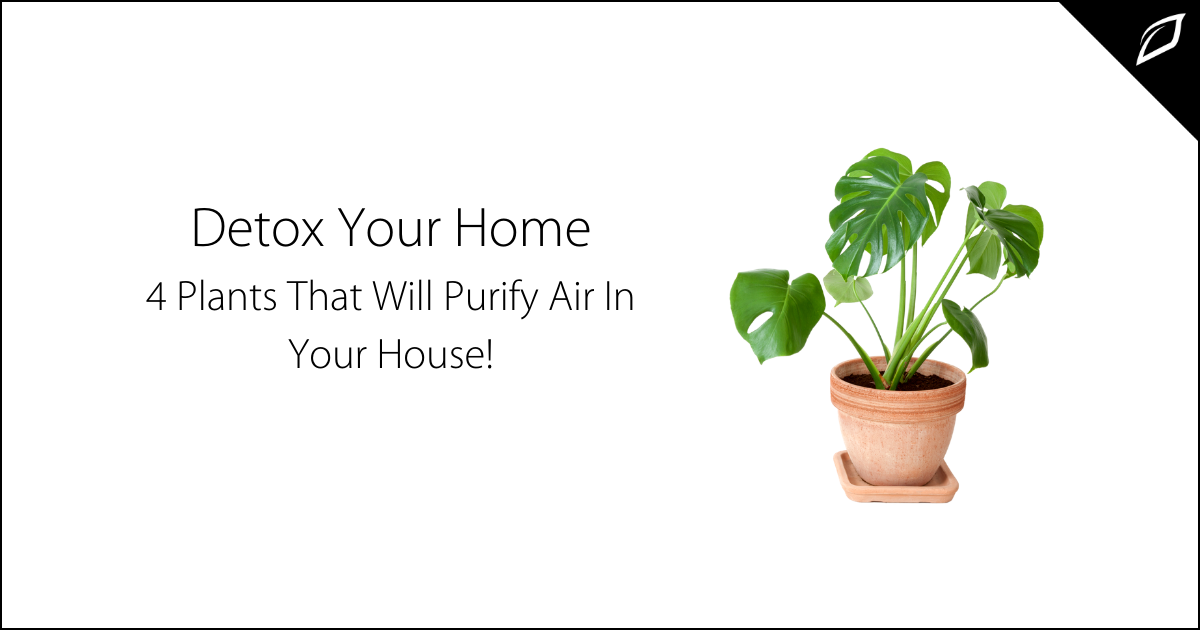Top 5 Most Unusual Hemp Facts
Industrial hemp was grown in the U.S. since the first European settlers arrived in the early 1600s. It was considered illegal NOT to grow hemp in...

4 Plants That Will Purify Air In Your House!
Plants are one of the most functional and aesthetically pleasing decor items you can place in your home. They will bring a sense of the outdoors inside, and individual plants will remove toxins and improve your interior air quality.
Here are four plants that NASA proved will purify the air in your home.
Gerbera Daisy
Gerbera daisies are one of the few blooms to make the NASA Clean Air Study list. These lively blossoms can remove traces of formaldehyde, benzene, and trichloroethylene, making an incredible impact in just 24 hours of exposure.
Potted gerbera daisies require bright, filtered light. Consider placing them near a window that doesn't get full sun exposure. Water the daisies infrequently, allowing the soil to get completely dry. The most effective way to water gerbera daisies is to soak thoroughly. Remove and empty the drainage tray after watering to reduce the risk of root rotting, and avoid wetting the leaves.
Gerbera daisies go dormant during the winter months and require less watering. Deadhead your blooms at the end of the growth cycle and repot as the plant gets crowded.
English Ivy
English ivy is a low-maintenance plant that will thrive anywhere, including in a potted setting. According to the NASA Clean Air Study, this climber is one of the most useful plants for removing toxins from the air. During the study, English ivy effectively eliminated benzene, formaldehyde, xylene, toluene, and trichloroethylene over the 24 observation period.
English ivy does well in small, crowded pots and will thrive on neglect. These plants are generally found in forests and low-light areas, making them perfect for interior rooms. While ivy prefers regular watering and moisture, root rot isn't a significant concern. As such, you can use an automatic watering bulb to keep it happy. This purifier is a fantastic plant option for those who struggle to keep plants alive.
Potted Mums
Mums, AKA chrysanthemums, are a vibrant, low-maintenance bloom that adds life to any indoor setting. According to Seed Needs, these stunning flowers come in various shades and are suitable for indoor planting.
To keep potted mums alive indoors, they'll require diffused light and cool temperatures. Keep your mums out of sunny windows and opt for more shaded, basement windows instead. After your mum blooms, deadhead the stems and place it in a cool, dry area for its dormancy period. Many people prefer to replace their potted mums after the blooms die rather than fighting to bring it back. Fortunately, seeds are affordable and readily available for this plant.
Mums require frequent watering, though it's vital to keep the leaves dry to prevent rotting. Lift the leaves and use a narrow-stemmed watering can for the best results.
Philodendron
Philodendrons are a simple, leafy green plant that has been found in homes for years. Their steadfastness and low-maintenance needs to make them an ideal potted plant while their heart-shaped leaves add vitality to a room.
These purifiers aren't as effective at removing toxins as the other plants on this list. However, they do remove trace amounts of formaldehyde and are one of the easiest plants to maintain. Philodendrons prefer sunny windows and infrequent watering. They thrive when fertilized annually with basic indoor plant food.
One of the best features of this plant is that it will communicate its needs to you. If it's getting too much direct sunlight, the leaves will turn yellow. If the new growth is pale and wispy, it needs food. Finally, if you're overwatering your philodendron, it's leaves will droop then correct within 24 hours of being nurtured.
With these four plants, you can decorate your home and create a cleaner, fresher atmosphere.

Industrial hemp was grown in the U.S. since the first European settlers arrived in the early 1600s. It was considered illegal NOT to grow hemp in...

The ultimate goal for controlled environments? Higher, faster, more easily repeatable yields. One 25,000-square meter Japanese indoor farm produces...
-png.png)
Vapor pressure deficit (VPD) and its function in plant growth can be used as a tool for increasing your harvest. VPD isn't new, but historically...